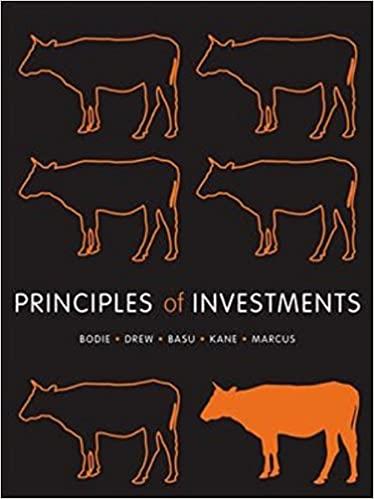Answered step by step
Verified Expert Solution
Question
1 Approved Answer
PROBLEM 2 : ( THEORY EXERCISE ) CAPITAL STRUCTURE DECISIONS THROUGH THE LENS OF HOLMSTROME - TIROLE Consider the model of Holmstrome - Tirole from
PROBLEM : THEORY EXERCISE CAPITAL STRUCTURE DECISIONS THROUGH THE LENS OF HOLMSTROMETIROLE
Consider the model of HolmstromeTirole from class on firm indirect direct financing. First consider the case with only a single entrepreneur needing to invest to start a project and with wealth hence requiring outside funds to start the project. The project generates in profits if it successfully gets off the ground and zero otherwise. If the entrepreneur works hard, they will have probability of success, while if they are lazy, the probability of success is If an entrepreneur is lazy they get a side benefit of There are a large number of outside investors with ample funds to invest but have an outside option to invest in government bonds that offers a yield of on the same horizon as the project. Investors are riskneutral and only care about the termination payoff. Assume that investor contract is set up as equity where the entrepreneur promises to pay a dividend of to the outside shareholders as a percent of the project profits, but has limited liability.
Write the entrepreneur's expected payoff given their promised dividend policy if they work hard. Give a condition which their dividend policy must satisfy so that sceptical investors will believe the entrepreneur's assurance that they will work hard. Write the condition for general and then use the numerical values to give a precise constraint on
Use the numerical values to give a precise constraint on Is the constraint an upper or lower bound on Explain intuitively why that is the case.
What is the net expected present value of the investor under the two effort levels? Can lazy entrepreneurs be rationally financed here? Use notation consistent from class, but indicate its numerical value as well.
Would there be any difference in the investors expected payoff if rather than equity dividend policy, the entrepreneur offer a corporate bond? Suppose that could be or with chance of either or if successful, would your answer change? Explain your answers
Derive, if it exists, a condition on entrepreneur's initial wealth necessary for the entrepreneur to receive funding from the investor, first for some general feasible Give a numerical value of wealth win which is the least required to fund the project.
Draw the net return of the investor over wealth

Step by Step Solution
There are 3 Steps involved in it
Step: 1

Get Instant Access to Expert-Tailored Solutions
See step-by-step solutions with expert insights and AI powered tools for academic success
Step: 2

Step: 3

Ace Your Homework with AI
Get the answers you need in no time with our AI-driven, step-by-step assistance
Get Started


